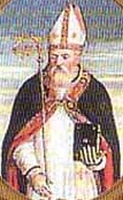
| 5 October |
• yesterday • tomorrow |
| Optional Memorial of Blessed Francis Xavier Seelos, Priest |
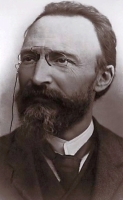
• Bartolo Longo
• Bartolomea Longo
• Bartolomeo Longo di Latiano
• Brother Rosary
• Fratel Rosario
• Herald of the Blessed Virgin Mary's Rosary
• Man of Mary
Son of a physician, Longo was born financially well off, and received a good education, both secular and Christian, and attended a Piarist school until age sixteen. Raised in a pious family; they prayed the Rosary together each night. An excellent student, Barolo was skilled in literature, oratory, fencing, dancing, music, and other arts, could play flute and piano, directed a school band; was also known to be restless, and had difficulty sitting through classes. Studied law at the University of Naples where received his degree in 1864, but where he fell into a dissolute and worldly life.
Following a philosophy class taught by a fallen-away priest, Longo moved from indifference to the Church to ridicule, to open hostility. He participated in street demonstrations against the Pope, then dabbled in occult nonsense like magnetism and spiritism, tipping tables and contacting the spirit world through mediums. Burning his bridges, he finally became a Satanist, and with some further study, a Satanist priest.
Bartholomew's family and friends refused to give up on the young man, praying for his return to the faith, and pecking away at his interest in Satan. Vincente Pepe, a respected professor from his home town, convinced him to turn from the occult, and a Dominican friar named Father Albert guided him through his return to the Church in a process we would today call deprogramming. Longo finally recovered his senses and his faith, and became a Dominican tertiary on 25 March 1871, taking the name Fratel Rosario (Brother Rosary).
Bartholomew wanted to do something to make amends for his apostasy, and began preaching against the occult in the places where college students frequented. Father Albert helped him join a group of local lay people working for the poor. Seeing the terrible, grinding poverty that was the lot of most, he wanted to do something to help, and had a sudden inspiration that the Rosary would become the key. He established a shrine of Our Lady of the Rosary in the valley of Pompei and used a discarded painting of Mary under that title as its visual. Pilgrims came, miracles occurred, the crowds grew, and the local bishop asked Bartholomew to construct a new church. Work on the church began in 1876, it was dedicated in 1887, given to the papacy on 19 February 1894, was designated a basilica in 1901 by Pope Leo XIII, and today receives about 10,000 pilgrims a day.
Bartholomew and Mariana, the widowed Countess di Fusco, constructed other charitable institutions nearby forming what became known as the City of Charity or City of Mary. To staff the orphanage in the City, Longo founded the Daughters of the Rosary of Pompeii.
He established a trade school for the Sons of the Imprisoned, boys whose fathers were in jail, and placed it under the direction of the Brothers of Christian Schools. The success of the school disproved the contemporary assumption that children of criminals were doomed to be criminals themselves, and in 1922 he established a sister school for the daughters of prisoners.
Because Bartholomew and Mariana worked together so much, gossip developed that they were romantically involved. To prevent their good work from being tainted by this talk, the two married in April 1885, but lived together chastely in keeping with private vows. It was not enough for some, however, and in the first years of this century he was accused of adultery, profiteering, dishonesty, even insanity. In 1906, Pope Saint Pius IX asked Longo to retire as administrator for the good of the City, and he did, handing it over to the papacy, and taking a job in the City as a regular employee. Made a Knight of the Guard Cross of the Holy Sepulcher in 1925.
11 February 1841 at Latiana, southern Italy
• 5 October 1926 of pneumonia
• buried in the crypt of the Rosary Basilica alongside his wife Mariana
26 October 1980 by Pope John Paul II
All-powerful and merciful God, in Blessed Bartolo, a promoter of the rosary of the Blessed Virgin, you showed a wonderful example of holiness and of charity for needy children and orphans. Through his prayers may we learn to see Christ your Son in our neighbors and to love him through them. We ask this through our Lord Jesus Christ, your Son, who lives and reigns with you and the Holy Spirit, one God, for ever and ever. - General Calendar of the Order of Preachers
You, what have you done by taking Christ out of the schools? You have produced enemies of social order, subversives. On the contrary, what have we gained by putting Christ into the schools of the children of criminals? We have transformed these misfortunate ones into honest and virtuous young people that you wanted to abandon to their sad fate or toss into insane asylums! - Blessed Bartholomew, writing to a group of criminologists about his schools
My only desire is to see Mary who saved me and who will save me from the clutches of Satan. - Blessed Bartholomew's last words
I wish to die a true Dominican tertiary in the arms of the Queen of the Rosary with the assistance of my holy Father Saint Dominic and of my mother Saint Catherine of Siena. - from Blessed Bartholomew's last will and testament
Rosary in hand, Blessed Bartolo Longo says to each of us: "Awaken your confidence in the Most Blessed Virgin of the Rosary. Venerable Holy Mother, in You I rest all my troubles, all my trust and all my hope!" - Pope John Paul II in his homily during the beatification ceremony for Blessed Bartholomew
https://catholicsaints.info/blessed-bartholomew-longo/
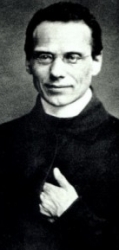
• Father Seelos
• Francesco Saverio Seelos
• Franz Xaver Seelos
One of twelve children born to Mang and Frances Schwarzenbach Seelos; he was named for Saint Francis Xavier. His father was a textile merchant who became parish sacristan. Francis was Confirmed on 3 September 1828, and made his first Communion on 2 April 1830. The boy wanted to be a priest from an early age, and often claimed he would be another Francis Xavier.
He completed his basic studies in Füssen, Germany, and graduated from the Institute of Saint Stephen in Augsburg, Germany in 1839. Received a degree in philosophy and theology from the University of Munich, and entered the Saint Jerome seminary in Dillingen an der Donau, Germany on 19 September 1842.
Francis became familiar with the Congregation of the Most Holy Redeemer, and their mission to work with the poorest, the abandoned, and immigrants. He joined on 22 November 1842. Feeling a call to minister to German immigrants to America, he left the seminary on 9 December 1842, sailed for the America on 17 March 1843, and arrived in New York on 20 April. Ordained in the Redemptorist Church of Saint James in Baltimore, Maryland on 22 December 1844.
Worked nine years at Saint Philomena parish in Pittsburgh, Pennsylvania, six of those years as assistant pastor to, and spiritual student of Saint John Neumann, and the other three as superior and novice master of his Redemptorist community. Faithful to the Redemptorist teachings, he led a simple life, preached a simple message, and was always available to those in need. His sermons drew crowds from neighboring towns, there were lines outside his confessional, and he never tired of working with children. He heard Confessions in English, German, and French, from black and whites and anyone else with a burden.
Transferred to parish ministries in Baltimore in 1854, Cumberland, Maryland in 1857, and Annapolis, Maryland in 1862. Proposed as bishop of Pittsburgh in 1860, but he begged to be excused "from this act of God", and his desire was granted by Pope Pius IX.
In 1863, during the American Civil War, all men were obliged to be available for active military duty. Seelos, as Superior of the Redemptorist Seminary, met with President Abraham Lincoln, and obtained an agreement not to send seminarians to the front. Seelos soon after lost his position as Prefect of Students for being "too lenient".
From 1863 to 1866 he lived as an itinerant mission preacher in both English and German in Connecticut, Illinois, Michigan, Missouri, New Jersey, New York, Ohio, Pennsylvania, Rhode Island, and Wisconsin. Hearing of an influx of German immigrants to New Orleans, Louisiana, he pastored a Redemptorist church there beginning in 1866. He worked with yellow fever victims until he was taken by the illness the next year.
• 11 January 1819 at Füssen, Bavaria, Germany
• baptized on the same day
• 4 October 1867 in New Orleans, Louisiana of yellow fever
• buried in a crypt beneath the floor of Saint Mary's Assumption Church, New Orleans
• 9 April 2000 by Pope John Paul II at Rome, Italy
• responsible for the miraculous healing from inoperable liver cancer of Angela Boudreaux in 1966
against cancer
O Lord, my strength and my Redeemer, let the words of my mouth and the meditation of my heart be pleasing in Your sight. I offer praise to You for the grace You have bestowed on Your humble missionary, Father Francis Xavier Seelos. May I have the same joyful vigor that Father Seelos possessed during his earthly life to love You deeply and live faithfully Your gospel. Amen. - Byron Miller, C.Ss.R.
Faithful to the spirit and charism of the Redemptorist Congregation to which he belonged, Father Francis Xavier Seelos often meditated upon these words of the Psalmist. Sustained by God's grace and an intense life of prayer, Father Seelos left his native Bavaria and committed himself generously and joyfully to the missionary apostolate among immigrant communities in the United States.
In the various places where he worked, Father Francis Xavier brought his enthusiasm, spirit of sacrifice and apostolic zeal. To the abandoned and the lost he preached the message of Jesus Christ, "the source of eternal salvation" (Hebrews 5:9), and in the hours spent in the confessional he convinced many to return to God. Today, Blessed Francis Xavier Seelos invites the members of the Church to deepen their union with Christ in the sacraments of Penance and the Eucharist. Through his intercession, may all who work in the vineyard for the salvation of God's people be encouraged and strengthened in their task. - Pope John Paul II at the beatification recognition for Blessed Francis
https://catholicsaints.info/blessed-francis-xavier-seelos/
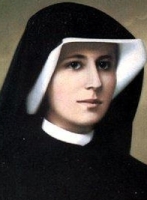
• Elena Kowalska
• Faustina Kowalska
• Helena Kowalska
• Maria Faustina Kowalska
• Sister Faustina
• Sister Maria Faustina of the Most Blessed Sacrament
Third of ten children, she attended only three years of school. As a teenager, she worked as a domestic servant for other families. After being rejected by several religious orders, she became a nun in the Congregation of the Sisters of Our Lady of Mercy in Warsaw, Poland on 1 August 1925; the Congregation is devoted to care and education of troubled young women. She changed her name to Sister Maria Faustina of the Most Blessed Sacrament. During her 13 years in various houses, she was a cook, gardener, and porter.
She had a special devotion to Mary Immaculate, to the Sacrament, and to Reconciliation, which led to a deep mystical interior life. She began to have visions, receive revelations, and experience hidden stigmata. She began recording these mystical experiences in a diary; being nearly illiterate, it was written phonetically, without quotation marks or punctuation, and runs to nearly 700 pages. A bad translation reached Rome in 1958, and was labelled heretical. However, when Karol Wojtyla (Pope John Paul II) became Archbishop of Krakow, he was besieged by requests for a reconsideration. He ordered a better translation made, and Vatican authorities realized that instead of heresy, the work proclaimed God's love. It was published as Divine Mercy in my Soul.
In the 1930's, Sister Faustina received a message of mercy from Jesus that she was told to spread throughout the world, a message of God's mercy to each person individually, and for humanity as a whole. Jesus asked that a picture be painted of him with the inscription: "Jesus, I Trust in You." She was asked to be a model of mercy to others, to live her entire life, in imitation of Christ's, as a sacrifice. She commissioned this painting in 1935, showing a red and a white light shining from Christ's Sacred Heart.
Apostles of Divine Mercy is a movement of priests, religious, and lay people inspired by Faustina's experiences; they spread knowledge of the mystery of Divine Mercy, and invoke God's mercy on sinners. Approved in 1996 by the Archdiocese of Krakow, it has spread to 29 countries.
25 August 1905 at Glogowiec, Poland as Elena (Helena) Kowalska
5 October 1938 at Krakow, Poland of tuberculosis
• 18 April 1993 by Pope John Paul II
• her beatification miracle involved the cure of Maureen Digan who suffered Milroy's disease, a hereditary form of lymphedema that cost her a leg
• 30 April 2000 by Pope John Paul II
• her canonization miracle involved the cure of Father Ronald P. Pytel's heart condition
Oh, how great is the goodness of God, greater than we can understand. There are moments and there are mysteries of the divine mercy over which the heavens are astounded. Let our judgment of souls cease, for God's mercy upon them is extraordinary. - from the diary of Saint Faustina
https://catholicsaints.info/saint-faustina-kowalska/
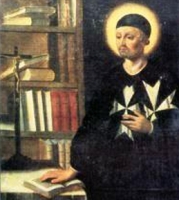
• Peter of Imola
• Peter Pattarini
• Pietro Pattarini de Imola
Son of Giacomo di Antonio, a member of the Ghibelline political faction, and related to the Italian nobility. Lawyer. By 1289 he is known to have served as a civil magistrate, and in 1299 was a leader in the peace negotiations between the Guelphs and the Ghibellines. For political reasons, he was exiled from Romagna region of northern Italy to Florence, Italy in 1311 where he began working with the sick in charity hospitals. He became a knight in the Order of Saint John of Jerusalem (Order of Malta), and devoted himself to the ministry. Elected Grand Prior of the Order in Rome, Italy. Director of the Commandery of San Giacomo in Campo Corbellini, Florence, which was completely devoted to care for the sick.
mid-13th century Italy
• 5 October 1320 in Campo Corbellini, Florence, Tuscany, Italy of natural causes
• entombed in the church of San Giacomo in Campo Corbellini
• during a church renovation, a ladder tipped over, threatening to cause a lot damage; witnesses attest that the hand of Blessed Peitro reached from his tomb and caught the ladder as it went by, stopping it from harming anything
• relics enshrined under the high altar of the church of San Giacomo
• most relics and records about him were destroyed when the church flooded for several days in 1557
• some relics enshrined in the cathedral in Imola, Italy
https://catholicsaints.info/blessed-pietro-da-imola/
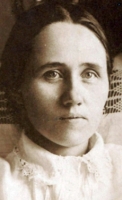
Daughter of a poor carpenter. Anna dropped out of school at age 14 to work as a maid, and had hopes of a religious vocation, but her father's death left her working to support the family, and she was a lifelong lay woman. In 1898 she received a vision of Christ who warned her that she had many years of pain ahead of her. She was paralyzed by an industrial accident in 1901 when she fell into a vat of boiling water and lost the use of her legs. From her sick bed she carried out an apostolate through correspondence. Known for her devotion to the Sacred Heart. May have received the stigmata, but always tried to hide the signs of it.
18 February 1882 in Mindelstetten, Bavaria, Germany
5 October 1925 in Mindelstetten, Bavaria, Germany of natural causes
21 October 2012 by Pope Benedict XVI
Anna Schaeffer continues to be present among us with her message of life, which is a solid anchor of salvation when sad moments are experienced or when dark valleys are crossed. - Pope John Paul II at Blessed Anna's beatification
Jesus, I live for you. - Saint Anna's dying words
https://catholicsaints.info/saint-anna-schaeffer/
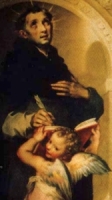
• Raymond delle Vigne
• Raymund, Raimondo
Studied at the University of Bologna, Italy. Dominican priest. Held assorted offices in various Dominican friaries around Italy including prior of the house in Rome, and lector in Florence and Siena. Spiritual director of, close advisor to, and extensive correspondent with Saint Catherine of Siena. Supported the call for Crusade against the Turks. Added his voice to the plea for Pope Gregory XI to return to Rome from Avignon, France. Worked with plague victims in Siena, and caught the disease himself. Supported Pope Urban VI against the anti-pope Clement VII in 1378. Master-general of the Dominicans in 1380. Restored discipline to the Order, and reformed it to the point that he is considered a second founder. Wrote biographies of Saint Catherine of Siena and Saint Agnes of Montepulciano.
1330 at Capua, Italy as Raymond delle Vigne
5 October 1399 at Nuremberg, Germany of natural causes
15 May 1899 by Pope Leo XIII
https://catholicsaints.info/blessed-raymond-of-capua/
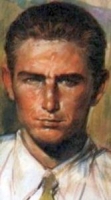
Son of Alfredo and Maria Marvelli. His father was a bank employee, and his mother was very active in Catholic charities. Educated by the Salesians and Catholic Action; Alberto joined Catholic Action at age 12 and was a member the rest of his life. Lay man. Civil engineer. He worked professionally and politically for reconstruction of Italy following World War II, and on a personal level he worked with the poor, keeping a bare minimum for himself, giving away everything else he owned. Member of the executive committee of the Christian Democrat political party. Known for his devotion to the Eucharist, he spent his morning in adoration, attended Mass, and then worked the rest of the day.
21 March 1918 in Ferrara, Italy
hit by a truck in a traffic accident on 5 October 1946 in Rimini, Forlì, Italy
5 September 2004 by Pope John Paul II
https://catholicsaints.info/blessed-alberto-marvelli/
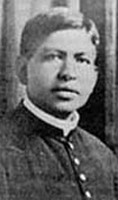
21 May as one of the Martyrs of the Mexican Revolution
Priest in the archdiocese of Guadalajara, Mexico. During the persecutions of the Mexican Revolution he continued his work in secret, celebrating Mass in private homes, and distributing Communion to covert Catholics. Martyred for refusing to stop his pastoral work, having been caught celebrating a marriage Mass.
8 July 1899 in Zapotlán el Grande, diocese of Ciudad Guzmán, Jalisco, Mexico
hanged from a tree on the morning of 5 October 1928 in front of the house where he had been celebrating Mass in Tepatitlán, Jalisco, Mexico
21 May 2000 by Pope John Paul II
https://catholicsaints.info/saint-tranquilino-ubiarco-robles/
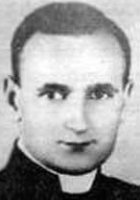
12 June as one of the 108 Martyrs of World War II
Priest in the archdiocese of Gniezno, Poland where he served in the parish of Plonkowo. Though he knew the dangers of the invading Nazis, Father Marian stayed to serve his parishioners, and was shot by Nazi youth militia members. Martyr.
15 April 1909 in Janowiec, Kujawsko-Pomorskie, Poland
shot with pistols on 5 October 1939 in front of his parish church in Plonkowo, Kujawsko-Pomorskie, Poland
13 June 1999 by Pope John Paul II
Jesus, have mercy! Forgive them! – Blessed Marian's dying words
https://catholicsaints.info/blessed-marian-skrzypczak/
• 29 October as one of the Martyrs of Douai
• 1 December as one of the Martyrs of Oxford University
Raised a Protestant, he studied at Oxford University and became an Anglican minister. Convert to Catholicism. Studied in Rheims, France. Ordained in 1580. Returned to England to work with Saint Edmund Campion, ministering to covert Catholics. Arrested in 1582 for being a priest, he was deported. He soon returned to England to resume his minastery, was captured at Holborn, and executed. Martyr.
Wilne, Derbyshire, England
hanged on 5 October 1588 at Shoreditch, London, England
15 December 1929 by Pope Pius XI
https://catholicsaints.info/blessed-william-hartley/
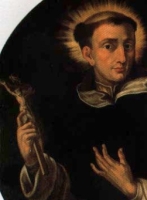
• Matthew of Mantua
• Matteo Carreri
Joined the Dominicans at Mantua, Italy in 1440. Travelling preacher throughout Italy. Noted for his deep prayer life and his devotion to the Rule of his Order. Once tried to trade himself for a mother and daughter who had been enslaved, but the pirates refused the offer.
c.1420 at Mantua, Italy
5 October 1470 at Vigevano, Italy of natural causes
• 1483 (cultus confirmed) by Pope Sixtus VI
• 2 December 1625 by Pope Urban VIII (beatification)
Vigevano, Italy
https://catholicsaints.info/blessed-matthew-carreri/
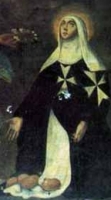
Flora of the Hosptiallers of Saint John
Know as a pious youth, her parents tried to arrange a marriage for her, but Flora resisted, and eventually entered a convent near Auvergne, France. In 1324 she entered the Priory of Beaulieu of the Hospitallers of Saint John of Jerusalem. Had the gifts of levitation, stigmata, and prophesy. She was ridiculed mercilessly by other sisters because of these gifts, and suffered bouts of depression.
1309 at Auvergne, France
1347 of natural causes
https://catholicsaints.info/blessed-flora-of-beaulieu/
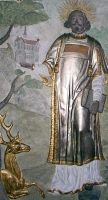
Meinolf, Meinolfo, Meinolfus, Meinulfus, Meinulphus, Meinuph, Meinulfo
Born to the nobility; his godfather was Charlemagne. Educated at the cathedral school of Paderborn, Germany. Archdeacon of Paderborn in 836. Priest. Noted preacher and evangelist. Founded the convent of Böddeken in Westphalia, Germany; legend says that abbey site was a place where Meinulph saw a stag with a cross in its antlers.
c.795
5 October 857 in Böddeken, Germany of natural causes
• with a stag with a cross in its antlers
• carrying a model of Böddeken monastery
https://catholicsaints.info/saint-meinulph/
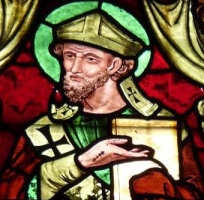
Aiplonay, Aiplomay
Son of Saint Isychius. Elder brother of Saint Avitus of Vienne. Bishop of Valence, France in 486 after a long vacancy in the diocese, and Apollinaris exhausted himself in reforming abuses and re-vitalizing the faith. Exiled by King Sigismund for political reasons, but allowed to return when he miraculously healed the king.
• c.520 of natural causes
• interred in the cathedral in Valence, France
• relics thrown into the River Rhone and destroyed by Huguenots in the 16th century
https://catholicsaints.info/saint-apollinaris-of-valence/
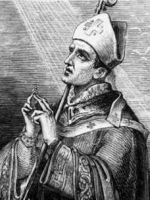
Atilanus, Attilano
Benedictine monk. Friend and spiritual student of Saint Froilan with whom he founded the monastery of Moreruela, Spain. Prior. Bishop of Zamora, Spain, and area that had been under Moorish occupation, on Whit-Sunday in 990.
c.939 at Tarazona, Spain
• 1009 in Zamora, Spain of natural causes
• relics in Saint Peter's church, Zamora
1095 by Pope Urban II
Zamora, Spain, diocese of
https://catholicsaints.info/saint-attilanus-of-zamora/
• John Hewitt
• John Weldon
• John Savell
Son of a draper. Educated at Caius College, Cambridge. Studied for the priesthood at Rheims, France. Ordained in 1586. Returned to England, as a covert priest using the names Weldon and Savell to hide his identity while working with his flock. Arrested at Grey's Inn Lane, London, on 10 March 1587 for the crime of priesthood. Martyr.
at York, North Yorkshire, England
hanged on 5 October 1588 at Mile End Green, London, England
15 December 1929 by Pope Pius XI
https://catholicsaints.info/blessed-john-hewett/
Benedictine monk. With his friend, Saint Attilanus, he reorganized the monastic community at Moreruela in Old Castile (part of modern Spain). From there the two worked to restore and revitalize Benedictine monasticism in western Spain. Bishop of Léon in 900. Noted for his generosity to the poor, and his own simple lifestyle as bishop. Reported miracle worker.
at Lugo, Galacia, Spain
905 of natural causes
• Léon, Spain
• Lugo, Spain
https://catholicsaints.info/saint-froilan/
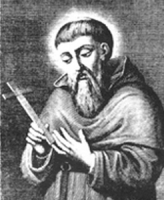
Joined the Augustinians in Cori, Italy. Monk. Prior. Priest. Noted preacher, always centered on Scripture.
early 14th-century in Cori, Lazio, Italy
1392 of natural causes
1 February 1888 by Pope Leo XIII (cultus confirmation)
https://catholicsaints.info/blessed-sante-of-cori/
• 29 October as one of the Martyrs of Douai
• 22 November as one of the Martyrs of England, Scotland, and Wales
Layman martyr.
Kegworth, Leicestershire, England
hanged in 1588 at Clerkenwell, London, England
15 December 1929 by Pope Pius XI
https://catholicsaints.info/blessed-robert-sutton/
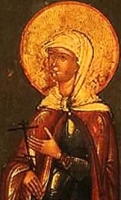
Caritina
Martyred in the persecutions of Diocletian.
• tortured to death in 304 at Amasa, Asia Minor on the Black Sea
• died while praying
https://catholicsaints.info/saint-charitina-of-amasa/
Eighth century hermitess, nun, and abbess of the monastery of Saint-Martial in Amiens, Gaul (in modern France). Friend of Saint Ulfia who also lived in the hermitage at Boves, France.
the head of Saint Aurea is enshrined in the Cistercian abbey of the Paraclete in Boves, France in 1630
https://catholicsaints.info/saint-aurea-of-amiens/
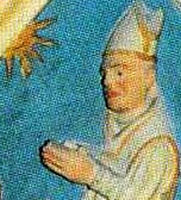
Eary bishop of Cagliari, Italy.
relics interred in the crypt of the sanctuary of the cathedral of Cagliari, Italy
https://catholicsaints.info/saint-eliano-of-cagliari/
Monk of Cluny Abbey in France. Brother monk to Saint Odo of Cluny. Abbot of Cluny in 942. Aymard became blind and c.952 resigned his position, handing it over to Saint Majolus.
965 of natural causes
https://catholicsaints.info/saint-aymard-of-cluny/
Madalveus, Mauvé
Benedictine Monk at Saint Vannes. Bishop of Verdun, France c.736.
Verdun, France
c.776 of natural causes
https://catholicsaints.info/saint-magdalveus-of-verdun/

Bishop of Aosta, Italy, consecrated on 15 October 528.
5 October 546 of natural causes
https://catholicsaints.info/saint-gallo-of-aosta/
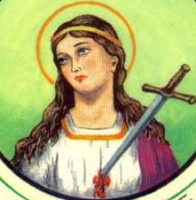
Nun. Martyr.
in Auxerre, France
https://catholicsaints.info/saint-flaviana-of-auxerre/
Martyred with a group of Christians in the persecutions of Maximian Herculeus.
martyred c.287 in Trier, Germany
https://catholicsaints.info/saint-boniface-of-trier/
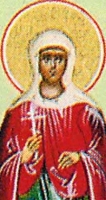
Nun. Martyred in the persecutions of king Shapur II.
Persia
https://catholicsaints.info/saint-mamlacha/
Martyred with a group of Christians in the persecutions of Maximian Herculeus.
c.287 in Trier, Germany
https://catholicsaints.info/saint-palmatius-of-trier/
Martyred in the persecutions of Diocletian.
3rd century in Trier, Germany
https://catholicsaints.info/saint-alexander-of-trier/
Third century bishop of Ravenna, Italy.
https://catholicsaints.info/saint-marcellinus-of-ravenna/
Deacon. Martyr.
Auxerre, France
https://catholicsaints.info/saint-firmatus-of-auxerre/
Bishop of Nevers, France.
https://catholicsaints.info/saint-jerome-of-nevers/
A group of about 30 Benedictine monks and nuns, some blood relatives, who were sent in the early days of the order to establish monasteries in the vicinity of Messina, Sicily, Italy, and who were martyred. We know the names, and a few details, about seven of them –
• Donatus
• Eutychius
• Faustus
• Firmatus
• Flavia
• Placidus
• Victorinus
6th century Messina, Sicily, Italy
https://catholicsaints.info/martyrs-of-messina/
Commemorates the large number of martyrs who died in Trier, Germany in the persecutions of Diocletian.
287 in Trier, Germany
https://catholicsaints.info/martyrs-of-trier/
Thousands of people were murdered in the anti-Catholic persecutions of the Spanish Civil War from 1934 to 1939. I have pages on each of them, but in most cases I have only found very minimal information. They are available on the CatholicSaints.Info site through these links:
• Blessed Eugenio Andrés Amo
• Blessed Sebastià Segarra Barberá
• Giovanni Battista del Santissimo Sacramento
• Tullia
CatholicSaints.Info Portable Edition